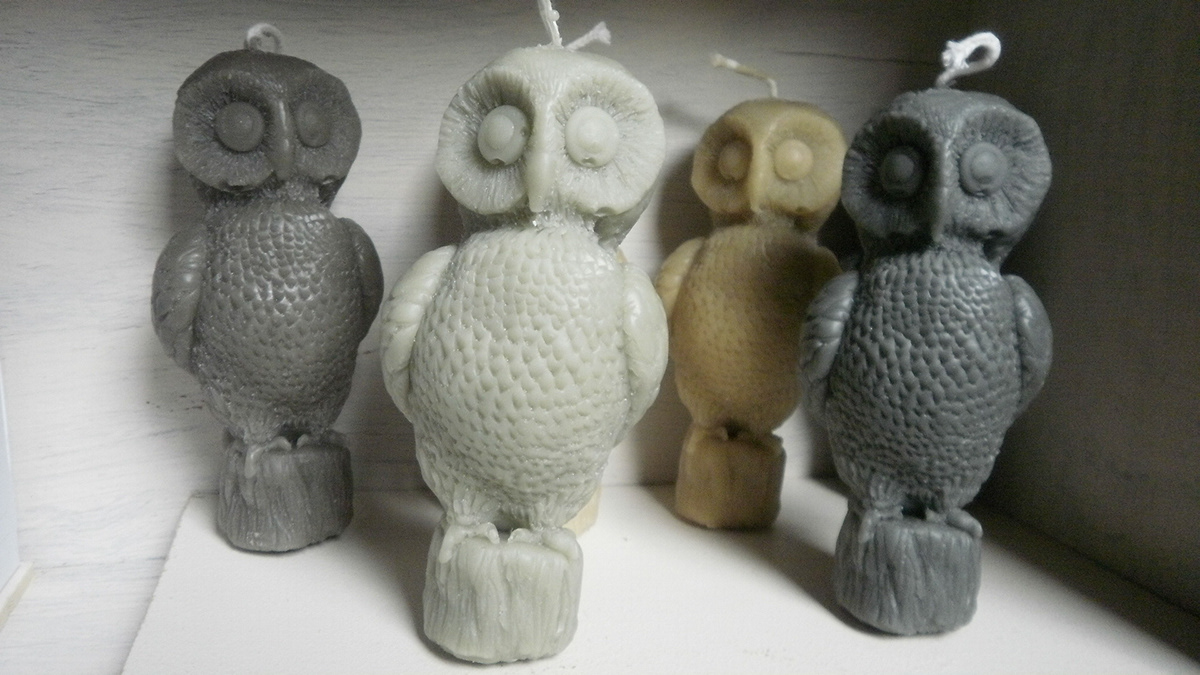Molds and candles
From liquid to firm
I refused to use silicone plastics for more than 10 years. I have been phascinated by reproductive medias but i waited till 2010 to work with them. I started with latex as it seems a more natural material. the molds i made started to desintegrate after 3 fillings of warm wax. The grand Heart candles seemed worth producing, so i got going. I make an original with polymere clay. ( First i made them out of molding wax, wich is so soft that you harm the model with every touch of your nail ) The polymere clay hardens at 100 degrees celsius in the oven. I ad a base to create an extra volume, because wax is crimping when it stiffens. i use a bottle or other recipient and fix the model with a screw in the bottom. Otherwise the model will just float in the liquid silicon rubber. I have to make sure the model is fixed in a way that the replica will turn out 100 procent perpendicular.I have to figure the exact volume of the mold and mix the rubber with the harder. This is poured in the recipient with the model and it takes about 24 hours to vulcanize. It needs a vibration during this proces to get out the airbubbles, which can ruin the mold if they stay in the wrong places. This is the reason not every model is useful for mold-making. If it has for example a long nose, this is probable to turn out as a container for air. It will have a bubble instead of a nose.I cut open the recipient and then the rubber mold on the backside of the model, or and the side. This cut is difficult to hide. The silicon rubber stays flexibel, so when i have put the wick for the candle and i close it, every little imperfect adjustion is visibel .
The small funny owl is my imagination. The bigger owl is a copy of a plastic "moneysavingjar" . It was made in HongKong and is more then 20 years old. I am very glad it turned out so beautiful. I spend two days putting layers of latex over it, and cloth, and more latex. I had to make a mold to create a wax-model because the pastic model had a hole on the base which makes it too complicated to make a siliconmold directly from the original.
The red owl you see on the right side in the picture is a copy. The white owl in the middle is also a copy on which i sculpted more details in the feathers. This is like my fingerprint only it took hours to get it done.
In the first picture of my owls you see that airbubbles also occur during the pouring of the wax. At the lowest part of the eyes ( wich is turned up during the proces of candlemaking) a small airbubble gets stuck.
If you are interested in the proces of mold and candle making leave a comment with your email adres and i'll inform you when my film is ready. Or if you come to Utrecht, netherlands you can come to see me working.



This funny owl is a replica of an original i made of polymere plastics. It is 13 cm high and 5,5 cm thick. It weighs 150 grams.It wil burn for approx.10 hours.
The second picture shows a replica of a plastic owl made in Hong Kong , more than 25 years ago. I first made a Latex-mold to make a copy. From this copy i am now making the sillicone-mold to be used for the candle-making. It is 15x 10 cm and its weight is 550 gr. I haven't burnt one yet.
These christmas-angels are a replica of an antique original. The proces is the same as for the HongKong owl. The angel is 6x 3,5 cm small, weighs 25 grams and a paraffine version burns for 2,5 hours, the beeswax version 4,5 hours.

